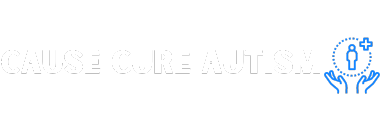Welcome to Our Blog: Managing Nail Biting in Autism
Do you have a habit of biting your nails when you get nervous or anxious? You’re not alone! Nail biting is a common behavior for many people, including those with autism. In fact, nail biting is often observed as one of many stimming behaviors in autistic children.
Stimming behaviors, such as nail biting, can help fulfill a need for oral stimulation in autistic children. While these repetitive behaviors can be beneficial in some ways, they can also cause problems. But don’t worry, there are ways to manage this behavior and help with oral fixation in autism.
If you want to dive deeper into the topic of stimming in autism, feel free to download our free guide here.
Reasons Behind Nail Biting in Autism
There are several potential causes for nail biting in autism. Nail biting is often a form of stimming behavior that helps autistic children cope with stress, anxiety, or sensory overload. It can also serve as a way to seek sensory stimulation and can be a socially acceptable form of stimming.
Understanding Repetitive Behavior in Autism
Repetitive behaviors, such as nail biting, are common among individuals with autism. These behaviors can be linked to self-stimulation, coping mechanisms, or nonverbal communication of stress and anxiety. It’s important to recognize and understand these behaviors in the context of autism.
Risks Associated with Nail Biting
Physical Impacts
- Skin damage: Biting nails can lead to rough and damaged skin around the nails.
- Infections: Bacteria from nail biting can cause infections around the nails and mouth.
- Dental problems: Nail biting can strain teeth, leading to dental issues like chipped teeth and misalignment.

Social Impacts
Nail biting can also have social consequences, such as stigma and bullying, which can further exacerbate stress and anxiety in children with autism.
How to Manage Nail Biting Behavior in Autistic People
To help your child manage nail biting behaviors, consider the following strategies:
1. Identify the triggers
Understand the underlying causes of nail biting to develop a plan to address the behavior.
2. Provide alternative coping strategies
Help your child find alternative stimming behaviors or tools, such as stress balls or fidget toys, to cope with anxiety.
3. Positive reinforcement
Encourage positive behavior with rewards like treats or extra screen time for refraining from nail biting.
4. Cover the nails
Consider using nail polish or gloves to prevent nail biting and provide a different sensory feel.
5. Seek professional help
If nail biting persists, seek guidance from healthcare professionals or consider ABA therapy for behavioral management.
Practice Compassion, Support, and Understanding
Managing nail biting behaviors in autism can be challenging, but with compassion, support, and understanding, it is possible to help individuals with autism address their stimming behaviors and work towards change.
FAQs
Q: Is nail biting a sensory issue?
A: Nail biting is often considered a sensory-seeking behavior related to oral fixation.
Q: Is a toddler biting nails a sign of autism?
A: Nail biting can be an early sign of autism in toddlers, but it is not exclusive to autism.
Q: How do I get my autistic child to stop biting his nails?
A: Covering the nails or seeking professional help can assist in managing nail biting behaviors.
Q: Is chewing nails a stim?
A: Yes, nail biting can be a form of stimming behavior, especially in individuals with autism.
Q: Why do kids with autism chew on things?
A: Chewing behaviors, such as nail biting, can serve as coping mechanisms for anxiety or stress in children with autism.
For more information, check out our references below.


